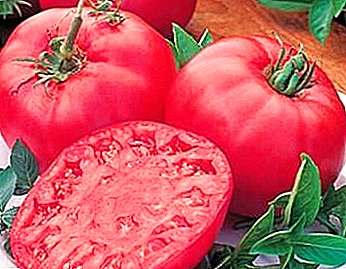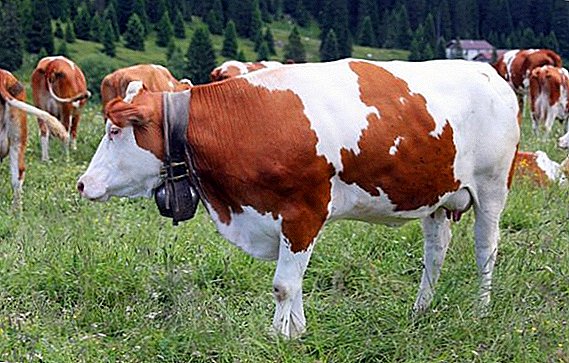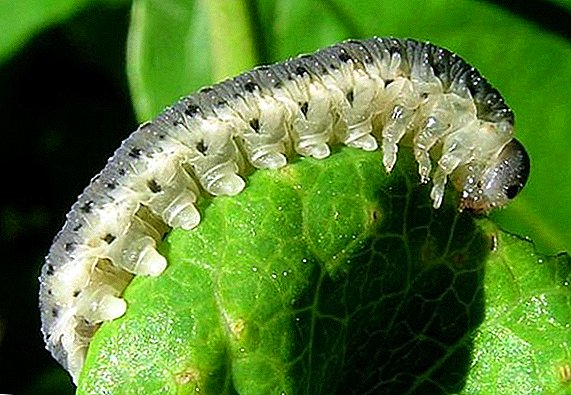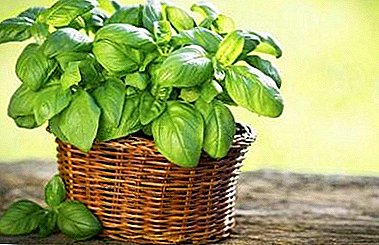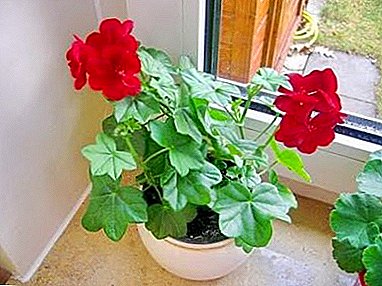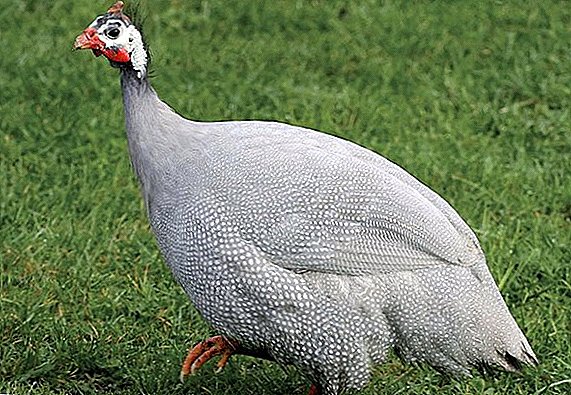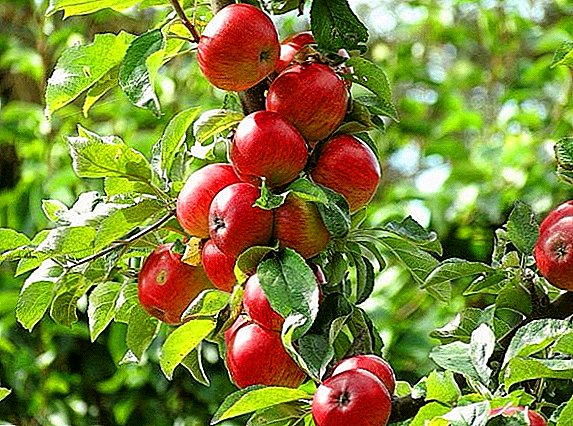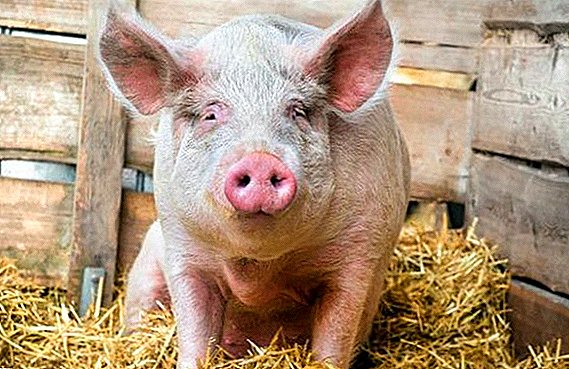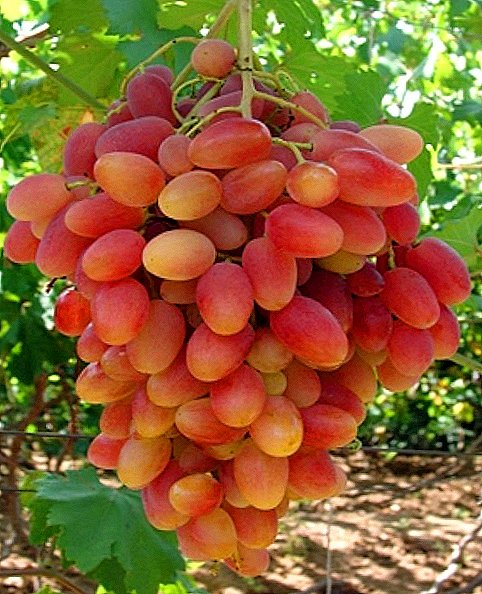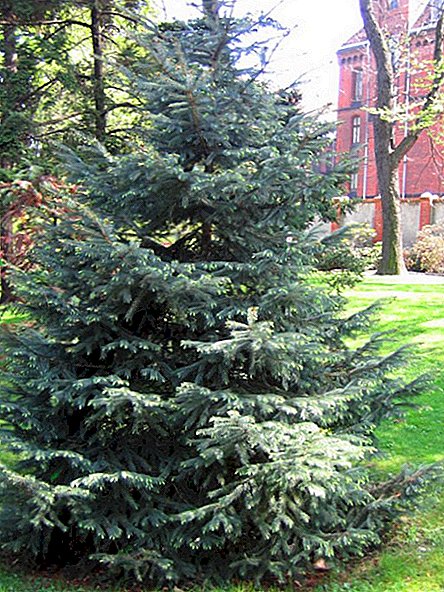 Coniferous trees have long been the object of attention of landscape designers and this is not surprising. Evergreen slender spruces are beautiful at any time of the year, in addition, their needles are able to clean the atmosphere. In this article we will talk about Engelman ate, the peculiarities of growing a tree on your site.
Coniferous trees have long been the object of attention of landscape designers and this is not surprising. Evergreen slender spruces are beautiful at any time of the year, in addition, their needles are able to clean the atmosphere. In this article we will talk about Engelman ate, the peculiarities of growing a tree on your site.
Botanical description
Engelman's spruce is an evergreen coniferous tree growing to 50 meters, the trunk diameter with such growth can reach 90 cm. Every year the tree increases its height by twenty centimeters. This species is a long-liver, it lives in natural conditions up to five hundred years, however, the needles lasts no more than fifteen years.
The fir-tree has a dense cone-shaped crown, the branches are drooping, most often growing symmetrically. On the trunk scaly bark of red-brown color, with small cracks. On the young branches of the bark of a yellowish shade, with an edge.
The buds of the representative of the species have the same elongated shape as the crown. The young needles have more blue color in color, the old one is more green, needles are tetrahedral, sharp, but not rigid. Needle length - up to 2 cm.  In August, cones, large, egg-shaped, up to 7 cm long, brown in color (young burgundy) ripen. Under the scales with sharp edges hiding winged seeds of dark brown color.
In August, cones, large, egg-shaped, up to 7 cm long, brown in color (young burgundy) ripen. Under the scales with sharp edges hiding winged seeds of dark brown color.
Distribution and ecology
The birthplace of Engelman Spruce is the forest of the Rocky Mountains of North America, also a province of Canada British Columbia. Trees grow in groups along the rivers, mountain slopes, preferring shadow areas.
Growing up, the group "climb" to an altitude of up to 3,500 thousand meters above sea level. They perfectly coexist with related species: fir and pine; with some species of larches, forming dense mixed or pure coniferous forests.
Did you know? The Indians of North America, knowing about the therapeutic properties of the needles, built for the patients with pulmonary diseases wigwams from the branches of spruce, pine and fir. Patients were in such a hospital until full recovery. The fact is that the needles contain volatile substances that are capable of killing germs and viruses.

Application in landscape design
Most often, spruce trees are used as living protection from wind, snow drifts and noise suppression. Such landings can be found both outside the city and in urban settings, in the form of avenues and mini-parks. The tree looks good in single and group plantings with coniferous and deciduous plants.
Also coniferous plants such as thuja, juniper, cross-pair microbiota, yew, cypress, fir, boxwood, pseudo-topsug, larch, cryptomeria, pine, cedar, and myririum foxtail, will perfectly decorate your summer cottage.
Low-growing varieties decorate rock gardens, protect flower beds, are used in bonsai compositions. The beautiful shape of the crown and the compliance of the forming haircut allows you to successfully use the Engelman spruce tree as a New Year tree, which many private house owners use.
Decorative species of Engelman spruce include:
- small conifers (microphilla);
- blue weeping (glauca pendula);
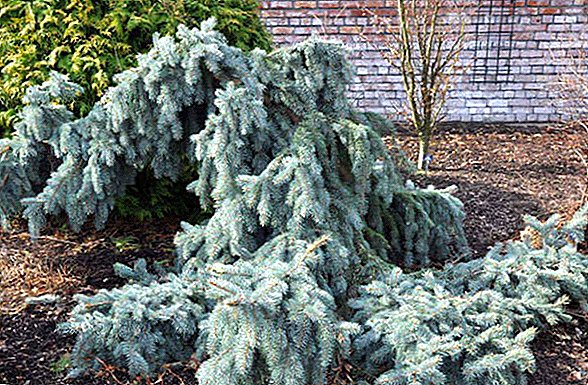
- blue (glauca);
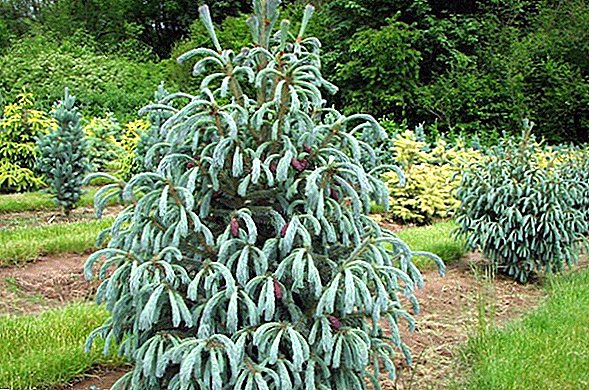
Did you know? Captain Cook and his team were helped to resist scurvy by making wine made from spruce needles. The medicinal properties of the wine is due to a large amount of vitamin C in the composition of the needles.
- silver (argentea).

Planting and care at home
When planting, it should be noted that many species react badly to a polluted environment. They are not recommended to land in areas with the production of heavy industry, near roads with heavy traffic, near gas stations.
Location selection
The view is not afraid of winds, it tolerates both high and low temperatures equally well. Also drought is not terrible, only young saplings require careful watering. Since, in natural conditions, the Engelman variety forms dense plantings, in a shaded place it will develop as well as in a lighted one.
It is not recommended to plant a view in areas where moisture stagnates, with groundwater location close to the surface. This can be detrimental to the root system. 
Substrate and soil
The plant is picky in the choice of soil, in nature it grows well on limestone. It is desirable for the culture to provide a drained, moderately moist substrate with a neutral reaction, for example, loams.
You will probably be interested to learn more about different types of soil, fertilizer systems for them, as well as find out what basic properties of the soil, how to improve soil fertility.
Diseases and their prevention
Consider the main diseases of the species, as they appear:
- Schutte - needles grow brown in spring, in the lower part of needles accumulations of fungal spores are formed;
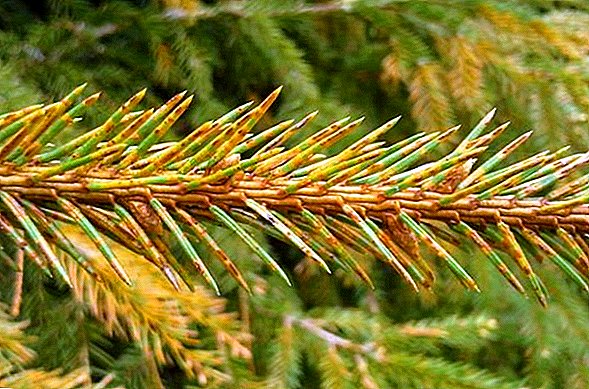
- snow shutte - brown scurf on the needles appears in the autumn, in the spring it becomes covered with white scurf;
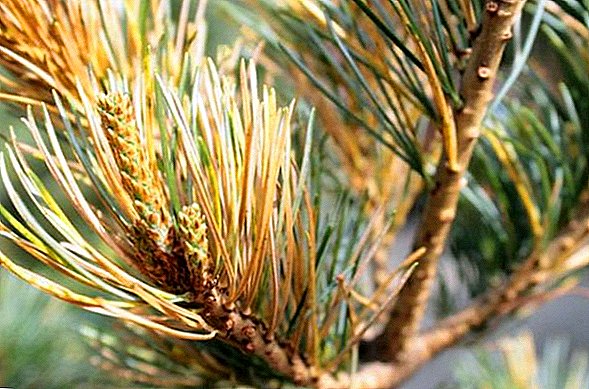
- fusarium - mostly young plants suffer, needles become brown in color and fly around;
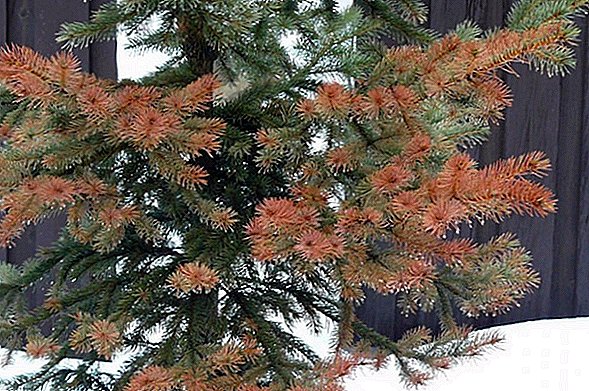
- stem and root rot - dry tops of branches, the trunk is covered by the settlement of mushrooms;
- necrosis of the cortex - bark becomes dry, changes color, becomes covered with rusty growths and, as a result, dies off;
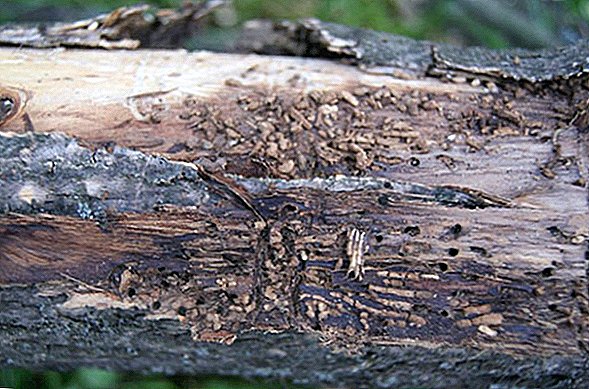
- ulcer cancer - ulcers appear on the bark of the trunk, leaking with resin, often with the formation of fungi;
id: 69917
We advise you to read about how to choose a spruce for the suburban area, as well as how to protect the spruce from diseases.
- cones rust - friable pustules, dark color appear under the scales of the cortex, the cones do not fall off in due time, and the seeds are fruitless;
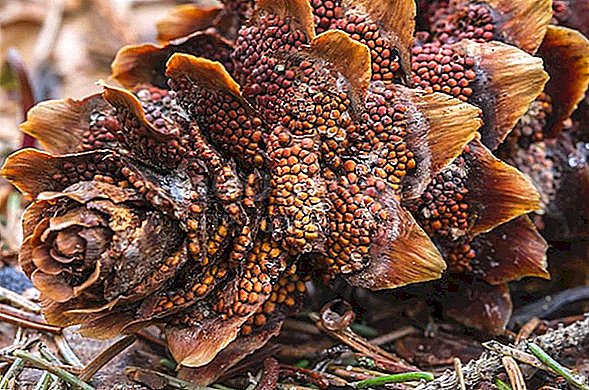
- spruce swivel - A severe form of a previous disease, aggravated by the curvature of the branches.
The fight against diseases involves treating plants with fungicides, usually watering the tree at the root.
Preventive measures:
- It is advisable to plant in a sunny area, long-term shading develops moisture, which bacteria love.
- Carefully choose seedlings.
- When planting, treat the root system with fungicides.
- To carry out timely sanitary pruning, process cuts with garden pitch.
- In the spring to conduct spraying preparations containing copper.
Important! It is recommended to exclude the neighborhood with the bird cherry, since the latter is subject to the same diseases and can become a carrier of viruses and bacteria.Video: how to properly trim coniferous plants
Familiarize yourself with the cultivation of spruce "Konica", "Nidiformis", as well as, Serbian, prickly, blue and common spruce.
Pests and their prevention
The main pests of Engelman spruce are:
- spruce moth;
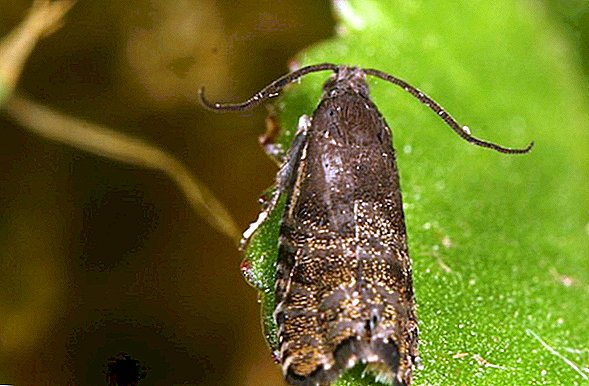
- spider mite;
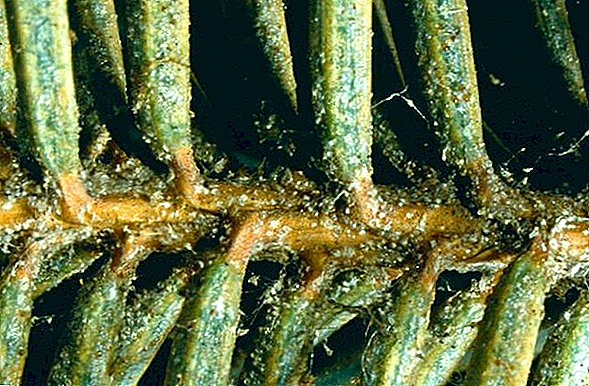
- Aphis spruce sitkhinskaya.
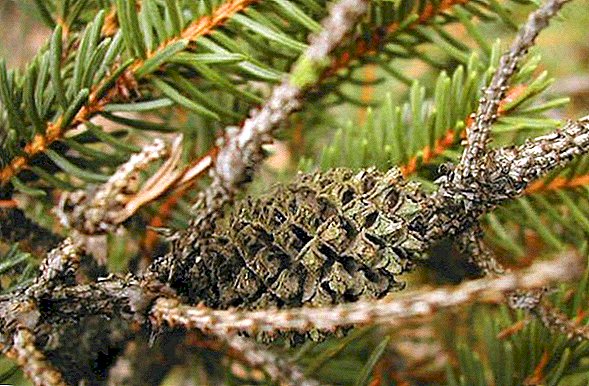
Spruce worm, according to its name, destroys the needles of a plant. The affected areas are treated with soapy water, with the help of a fan rake they remove damaged needles and burn it. When the situation is running apply systemic pesticides.
The spider mite lodges and breeds voracious offspring, most often on young plants, because of its vital activity, the tree loses its needles. The fight against pest is spraying with colloidal sulfur, you can use traditional methods: dandelion infusion, garlic. With a strong defeat by insects apply acaricides.
Important! Do not allow large settlements of ants (they breed aphids). In a strong drought, spray the branches to avoid creating a habitat favorable for the spider mite.Aphid and its numerous offspring suck all the sap from the green parts of the plant, which leads to the death of the tree. Densely populated with aphids, branches are best cut by processing the cut. The remaining areas need to be treated with soapy water, pre-laying the plant stem circle in order not to damage the soil microflora.

Preventive actions:
- Conduct timely sanitary pruning.
- Especially carefully care for young seedlings.
- Do not allow overmoistening.
- To carry out preventive spraying with insecticides.
Features of the process of care and landing
As already mentioned, spruce prefers moist, drained soil, so when planting they prepare the most suitable mixture for it:
- sod land - two parts;
- leaf earth - two parts;
- peat - one part;
- sand is one part.
The hole for planting is being dug with dimensions of 50x70, and brick fragments with a layer of up to 20 cm are placed at the bottom as drainage. In the case of a group landing, the distance between the holes is at least three meters.
When planting, the root collar is not buried, leaving it level with the soil surface. At the end of the process, watering with fertilizer is obligatory - 100 g of nitroammofoski, 10 g of root for 10 liters of water, just about 40 liters of water are poured at the root.
Video: how to plant spruce Caring for spruce is not difficult:
- watering - twice a month (in a drought once a week) twelve liters of water;
- top dressing - twice a year (complexes for conifers);
- pruning - sanitary and formative (spring or autumn);
- loosening - no deeper than five centimeters;
- weeding.
Some important points:
- In principle, formative pruning is not necessary for the tree, but when planting a hedge or avenue, it is necessary;
- for the winter, young trees are covered with spruce leaves;
- adult and young trees (near-stem circle) for the winter are covered with a layer of peat, in the spring it is mixed with the ground;
- to protect seedlings from intense heat and bright sun, they are covered with lightweight material;
- reproduction is carried out by seeds and vegetative;
- the seeds of Engelman ate retain their fecundity for five years.

Coniferous trees on the plot are always beautiful and stylish, they emit a specific fresh scent and allow you to feel unity with nature. Most coniferous trees and Engelman's fir-tree in particular are unpretentious either in planting or in caring, which is attractive even for inexperienced gardeners.













